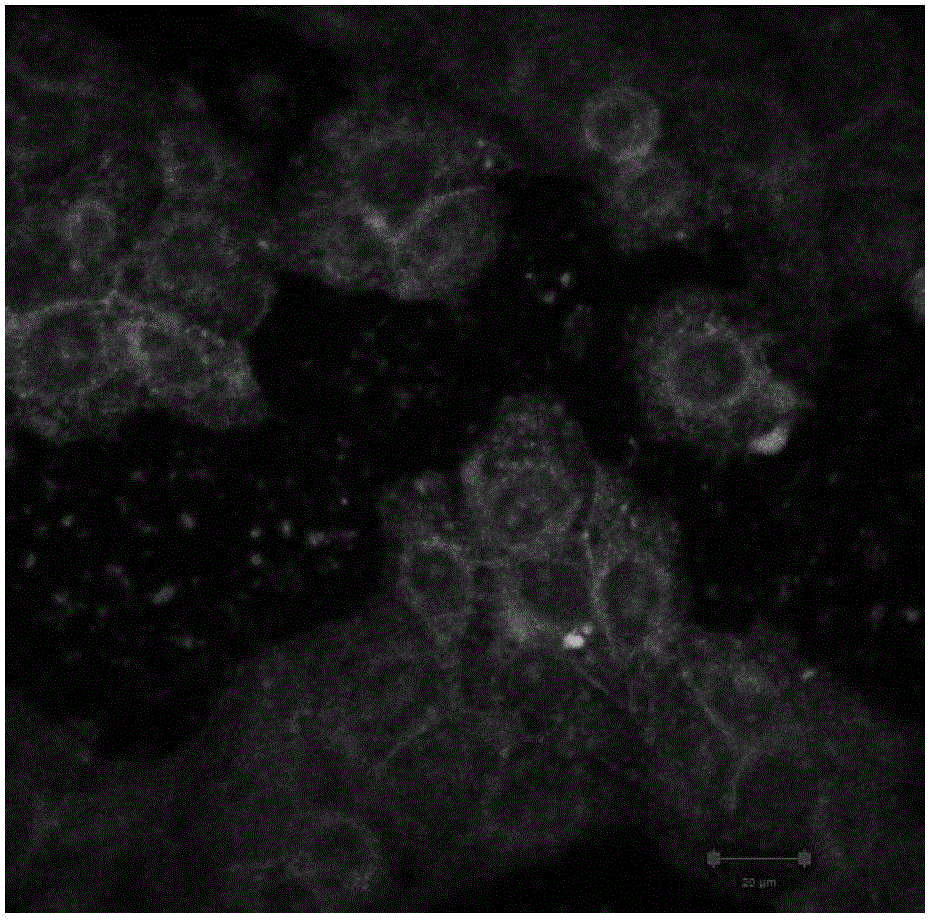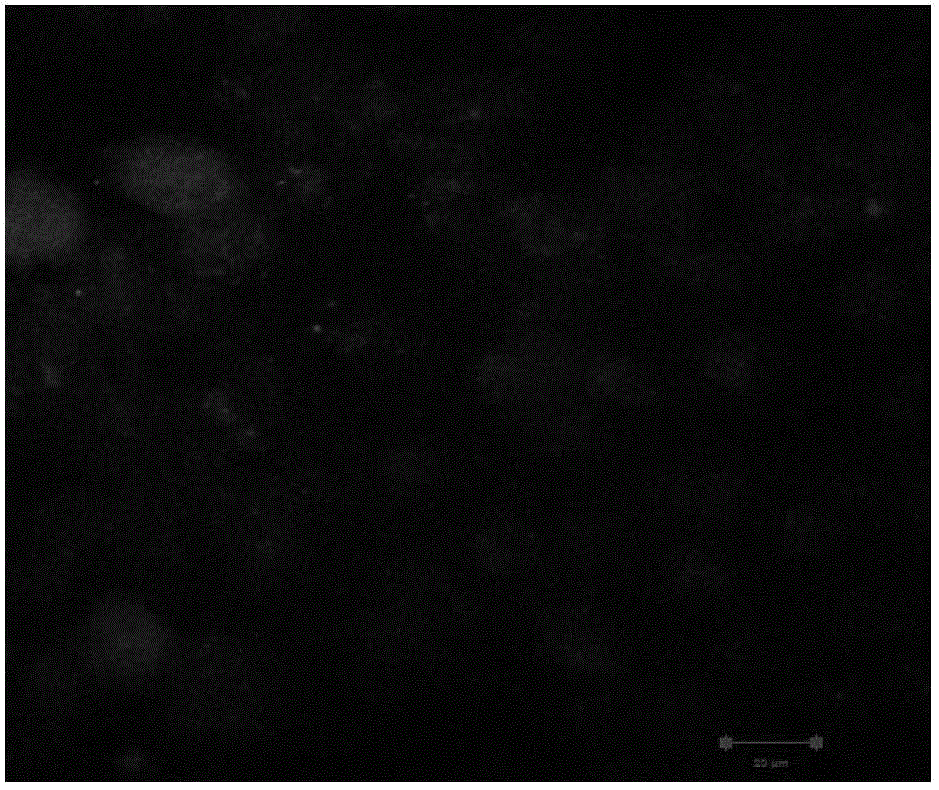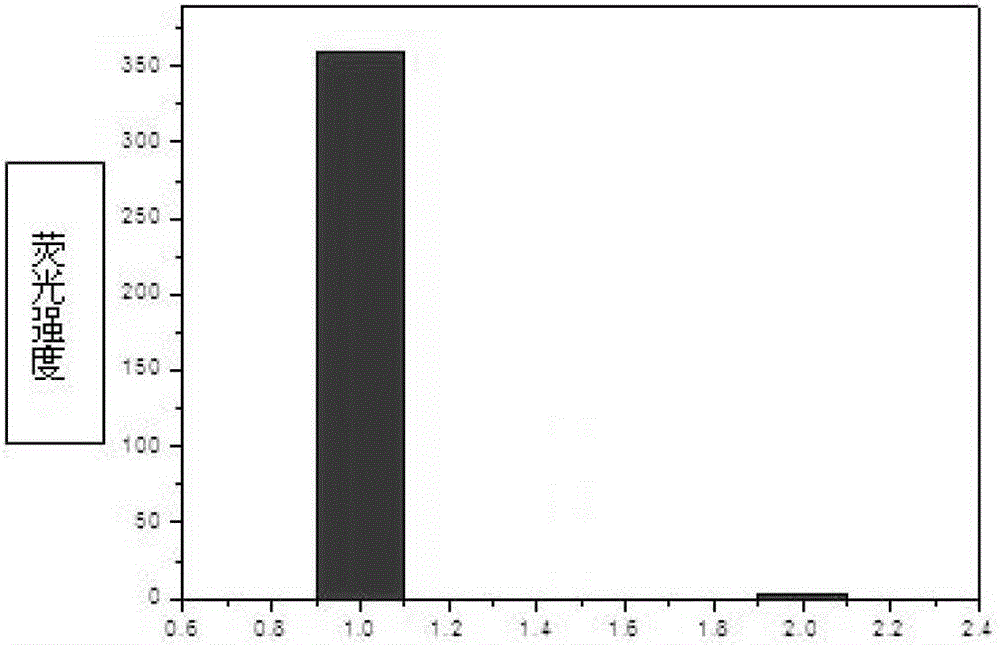Method for synthesizing rare earth metal compound nano cluster and application thereof
A rare earth metal, synthesis method technology, applied in pharmaceutical formulations, echo/ultrasonic imaging agents, preparations for in vivo tests, etc., can solve the problems of difficult deep tissue imaging, weak signal-to-noise ratio, etc., and achieve good targeted imaging Effect, strong targeting, broad medical application prospects
- Summary
- Abstract
- Description
- Claims
- Application Information
AI Technical Summary
Problems solved by technology
Method used
Image
Examples
Embodiment 1
[0026] A method for synthesizing rare earth metal compound nanoclusters includes the following steps:
[0027] 1) The mixed solution of europium nitrate and lanthanum chloride with different concentration ratios such as 1 / 17, 1 / 18, 1 / 19, 1 / 20, 1 / 21, 1 / 22, 1 / 23 and hepatocarcinoma cells are cultured in the cell 37℃ in the box, containing 5% CO 2 Incubate together for 10 hours to synthesize rare earth metal compound nanoclusters;
[0028] 2) Quantitative analysis of rare earth metal compound nanoclusters with fluorescence spectrometer;
[0029] Hepatocarcinoma cells (HepG2) were selected as the research object. In the experimental group, hepatoma cells (HepG2) in the logarithmic growth phase were seeded in a 6-well plate at a density of 1.6×105 cells / well. After 24 hours of culture, they were added to the sterilized and fresh The mixed solution of lanthanum chloride and europium nitrate diluted in sterile DMEM medium was incubated in a cell incubator for 10 hours to synthesize rare ea...
Embodiment 2
[0031] A method for synthesizing rare earth metal compound nanoclusters includes the following steps:
[0032] 1) Put a mixed solution of 1mg / ml lanthanum chloride and 0.01mg / ml europium nitrate with liver cancer cells in a cell incubator at 37°C, containing 5% CO 2 Incubate together for 10 hours to synthesize rare earth metal compound nanoclusters;
[0033] 2) Qualitative and quantitative analysis of rare earth metal compound nanoclusters with fluorescence spectrometer, confocal fluorescence microscope, etc.;
[0034] Hepatocarcinoma cells (HepG2) were selected as the research object. In the experimental group, hepatoma cells (HepG2) in the logarithmic growth phase were seeded in a 6-well plate at a density of 1.6×105 cells / well. After 24 hours of culture, they were added to the sterilized and fresh A mixture solution of lanthanum chloride and 1 mg / ml europium nitrate diluted in a sterile DMEM medium with a concentration of 0.01 mg / ml.
[0035] In the control group, hepatoma cells (H...
Embodiment 3
[0038] A method for synthesizing rare earth metal compound nanoclusters is characterized by comprising the following steps:
[0039] 1) Put a mixed solution of 1mg / ml lanthanum chloride and 0.01mg / ml europium nitrate with breast cancer cells in a cell incubator at 37°C, containing 5% CO 2 Incubate together for 24 hours to synthesize rare earth metal compound nanoclusters;
[0040] 2) Qualitative and quantitative analysis of rare earth metal compound nanoclusters with fluorescence spectrometer, confocal fluorescence microscope, etc.;
[0041] Construct a nude mouse subcutaneously inoculated breast cancer model, culture the breast cancer cells for 24 hours, add a sterilized and diluted fresh sterile DMEM medium with a mixed solution of lanthanum chloride and europium nitrate, and incubate in a cell incubator for 24 hours. Rare-earth metal compound nanoclusters, after ultrasonically dispersing a solution containing rare-earth metal compound nanoclusters, are injected into nude mice by a...
PUM
 Login to View More
Login to View More Abstract
Description
Claims
Application Information
 Login to View More
Login to View More - R&D
- Intellectual Property
- Life Sciences
- Materials
- Tech Scout
- Unparalleled Data Quality
- Higher Quality Content
- 60% Fewer Hallucinations
Browse by: Latest US Patents, China's latest patents, Technical Efficacy Thesaurus, Application Domain, Technology Topic, Popular Technical Reports.
© 2025 PatSnap. All rights reserved.Legal|Privacy policy|Modern Slavery Act Transparency Statement|Sitemap|About US| Contact US: help@patsnap.com



